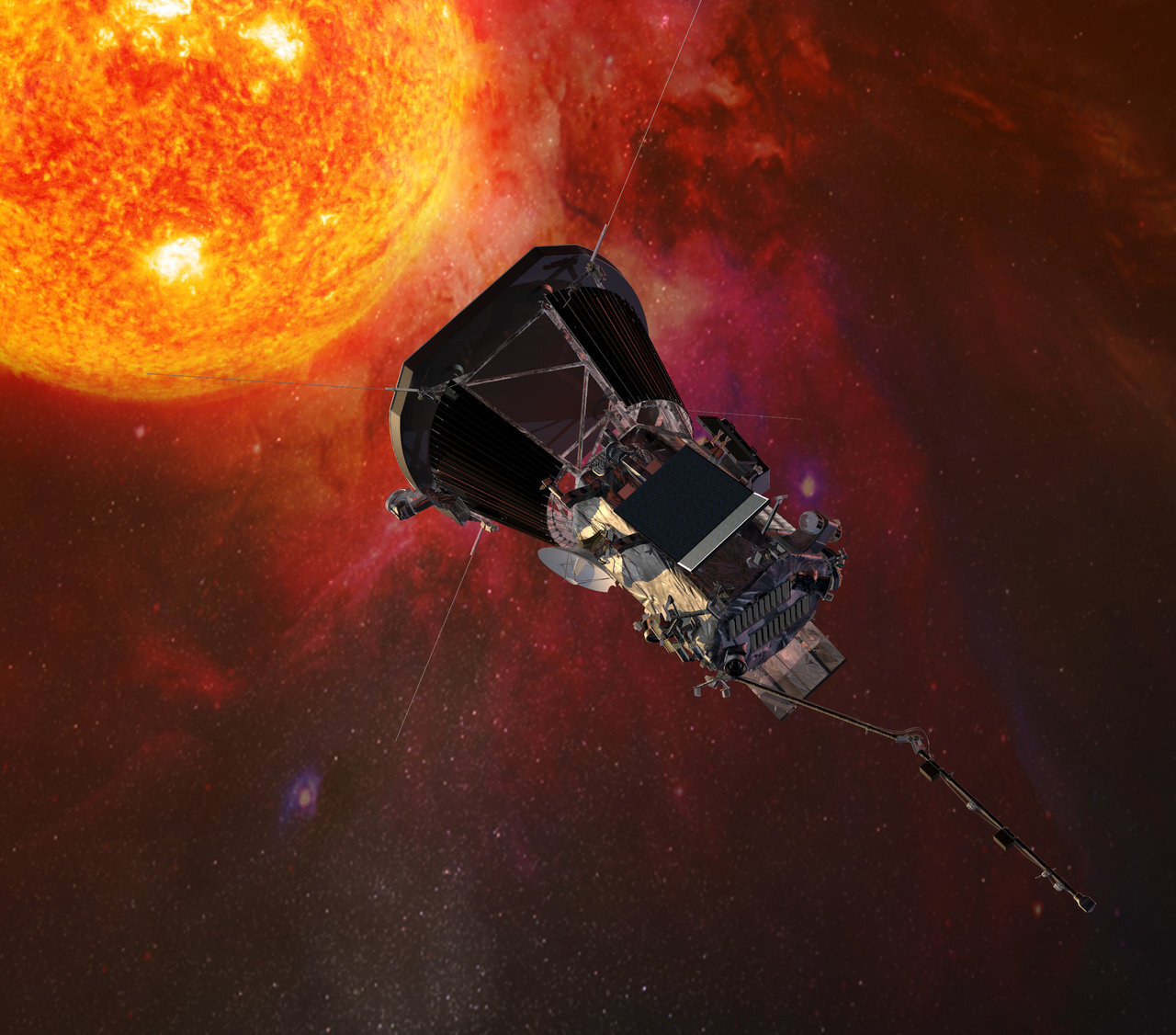News | June 12, 2017
10 Things, June 12: NASA's First Mission to Touch the Sun

Artist's concept of Parker Solar Probe.
Mark your calendars for summer 2018: That's when we're launching a spacecraft to touch the sun. In honor of NASA's first-ever mission to the heart of the solar system, this week's 10 Things is delving into the life and times of this powerful yellow dwarf star.
1. Meet Parker. Parker Solar Probe, NASA's first mission to go to the sun, is named after Eugene Parker, an American astrophysicist who first theorized that the sun constantly sends out a flow of particles and energy called the solar wind. This historic mission will explore one of the last regions of the solar system to be visited by a spacecraft and help scientists unlock answers to questions they've been pondering for over five decades.
2. Extra SPF, please. Parker Solar Probe will swoop within 4 million miles of the sun's surface, facing heat and radiation like no spacecraft before it. The mission will provide new data on solar activity to help us better understand our home star and its activity - information that can improve forecasts of major space-weather events that could impact life on Earth.
3. Majorly massive. The sun is the center of our solar system and makes up 99.8 percent of the mass of the entire solar system. If the sun were as tall as a typical front door, Earth would be about the size of a nickel.
4. Different spin. Since the sun is not a solid body, different parts of the sun rotate at different rates. At the equator, the sun spins once about every 25 days, but at its poles the sun rotates once on its axis every 36 Earth days.
5. Can't stand on it. The sun is a star and a star doesn't have a solid surface. Rather, it's a ball of ionized gas 92.1% hydrogen (H2) and 7.8% helium (He) held together by its own gravity.
6. Center of attention. The sun isn't a planet, so it doesn't have any moons. But the sun is orbited by eight planets, at least five dwarf planets, tens of thousands of asteroids, and hundreds of thousands to trillions of comets and icy bodies.
7. It's hot in there. And we mean really, really hot. The temperature at the sun's core is about 27 million degrees Fahrenheit. The sun's surface is only about 10,000 degrees. However, its atmosphere, the corona, can reach temperatures of 3 million degrees. (That's as if it got hotter the farther away you got from a fire, instead of cooler!) Parker Solar Probe will help scientists solve the mystery of why the corona's temperature is so much higher than the surface.
8. Travel conditions. The sun influences the entire solar system, so studying it helps us better understand the space weather that our astronauts and spacecraft travel through.
9. Life on the sun? Better to admire from afar. Thanks to its hot, energetic mix of gases and plasma, the sun can't be home to living things. However, we can thank the sun for making life on Earth possible by providing warmth and energy, which organisms like plants use to form the basis of many food chains.
10. Chance of a lifetime. Last but not least, don't forget that the first total solar eclipse to sweep across the U.S. from coast-to-coast since 1918 is happening on August 21, 2017. Here's a toolkit on everything you need to know to about it. https://eclipse2017.nasa.gov/
